by Aishath Nayasheen Ahmed, Head of Solutions Mapping, UNDP Maldives Accelerator Lab
The Authenti-City of an Artificial City
August 10, 2023
How do we create places where people can live comfortably, giving and receiving care to and from the environment, and making sure things last for a long time?
Over the last year, UNDP Maldives Accelerator Lab has been focusing on developing strategic options for cities and communities. Driven by the evolving urban landscape of the country, and the global push to accelerate the undertaking of the Sustainable Development Goals, specifically Goal 11 on ‘Sustainable Cities and Communities’, we embarked on an exploration in collaboration with Urbanco, a government-owned enterprise with the mandate of developing the country’s biggest artificial residential city, in addition to a few other industrial and commercial islands. Following the Lab’s practice of being informed by people and communities, we went and opened consultations where people are – to the artificially created, residential city called Hulhumalé. The city is the country’s first planned city that is being developed with the ambitious aim of becoming a one-stop solution to socioeconomic and environmental challenges faced by the island nation, and more specifically the over urbanized Male capital city.
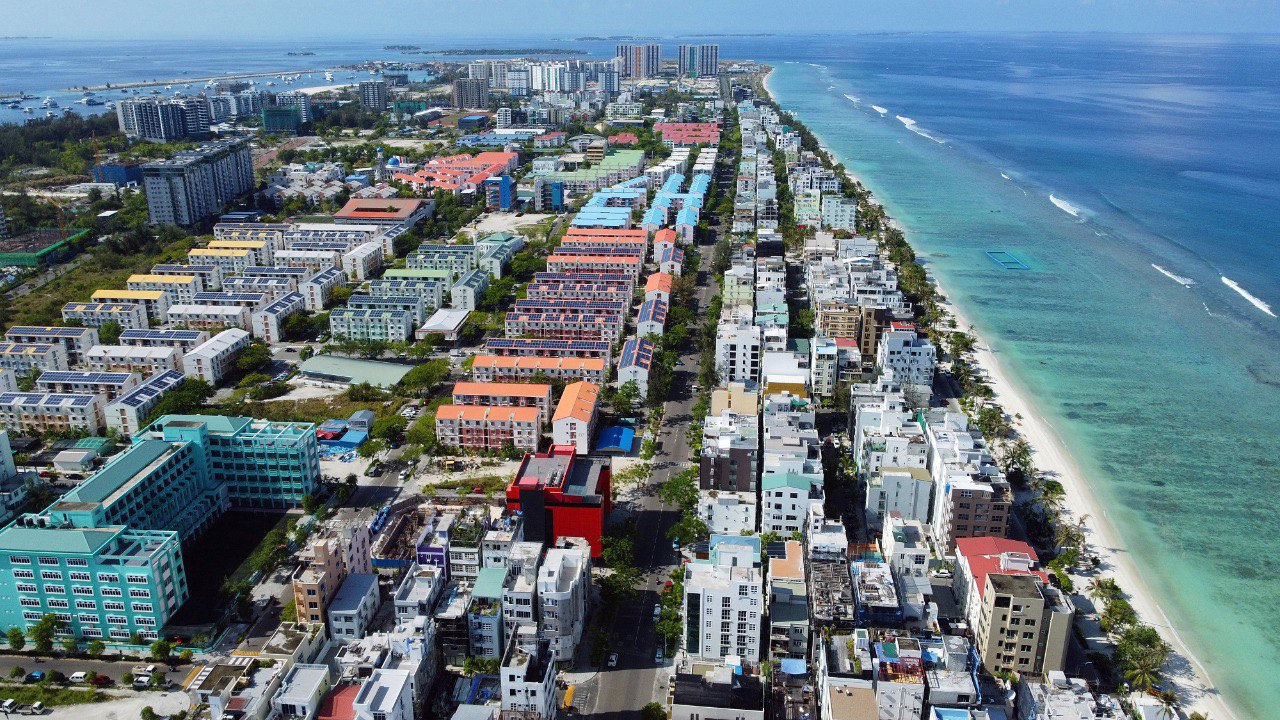
Aerial Image of Hulhumalé city.
Over 50% of the world’s population now lives in cities.[1] Projections foresee that by 2050 every 7 out of 10 people will be city dwellers, Maldives’ 2022 Census[2] similarly indicates that over 50% of the people in the country already reside in metropolitan areas that are classified as cities. These urban environments are in stark contrast to the remote 1000+ islands that make up the Maldivian archipelago - Hulhumalé being one of its most prominent urban centers. Now home to 65,000[3] residents out of the country’s 500,000+ population, future projections see the city becoming a home for two-thirds of the entire population of the Maldives. [4]
Highs & Lows at 2 Meters
Our exploration had a few summits to conquer, and we did start with Hulhumalé, the current highest point in the Maldives at 2 meters above the mean sea level. With this relatively higher elevation of the city in comparison to much of the country that lies less than 1m above sea level, Hulhumalé comes with its unique opportunities and challenges. The city is often found at a crossroads; in standing out as a city while struggling to maintain the island in it. Or on shaping its identity from the physicality of first-of its kind structures in the country, to the intangibility propelled by the hybridity of the people which gives the city a meaning.
Marking a first in the country, it is these spatial transformations that has spurred our Lab to work with Urbanco to develop a localized Liveability Index for Hulhumalé. As a novel initiative in the country, we are aiming to formulate this index framework that can be replicated in other island cities in the country, encouraging data-driven decision making. For Hulhumalé, currently we are using official data and citizen-generated data to help identify and set priorities in city planning efforts. The Liveability Index focuses on five themes: good governance, economic and environmental sustainability, social inclusivity, and technological innovation.
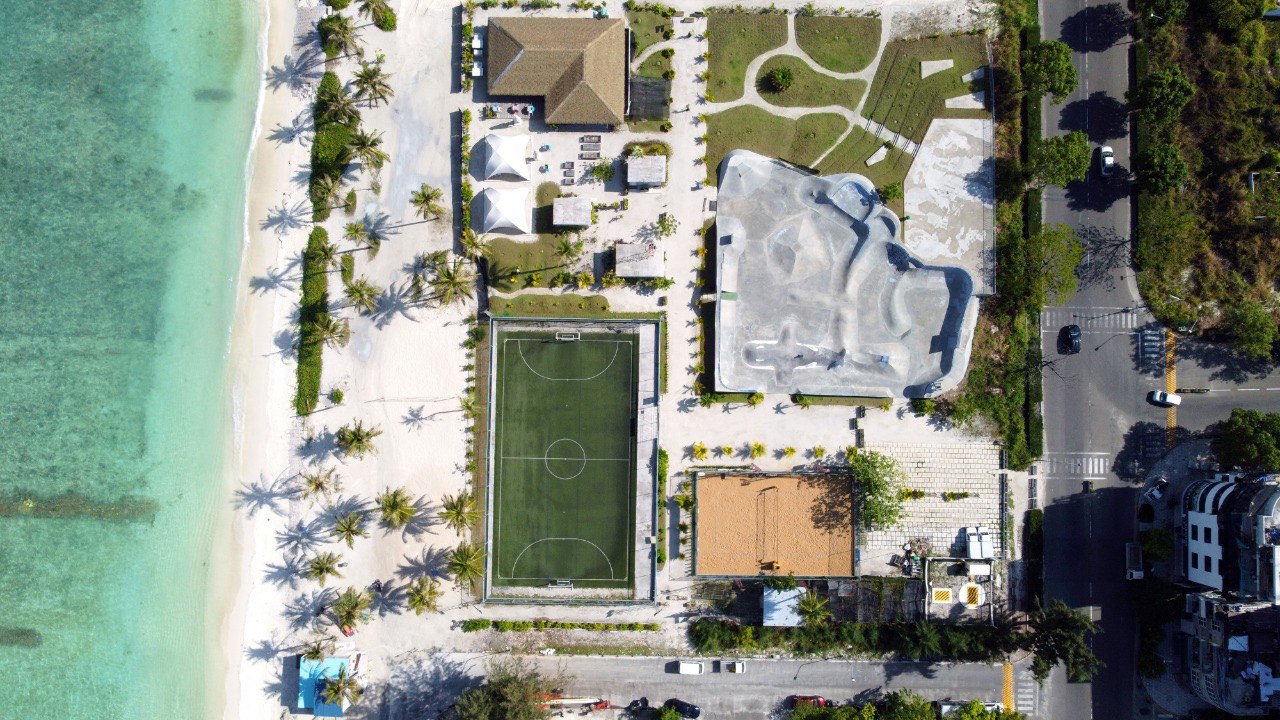
Aerial image of a neighbourhood in Hulhumalé.
Turning Spaces into Places
Firm in the belief that residents should be co-creators of their city, we hosted open calls for citizen engagement. In complement to the official data that we gathered, our Lab together with Urbanco, engaged with the community in a series of open space dialogues, interactive city modelling exercises and co-creation sessions. We designed an interactive space, featuring paper maps, toys, and objects, along with hand-drawn sketches of the city and its attractions, which opened dialogues within the groups.
Through play, the conversations naturally flowed - from the resident’s lived experiences of both good and bad, savoury and unsavoury, accompanied by ideas for solutions that were played out on a map of the city.
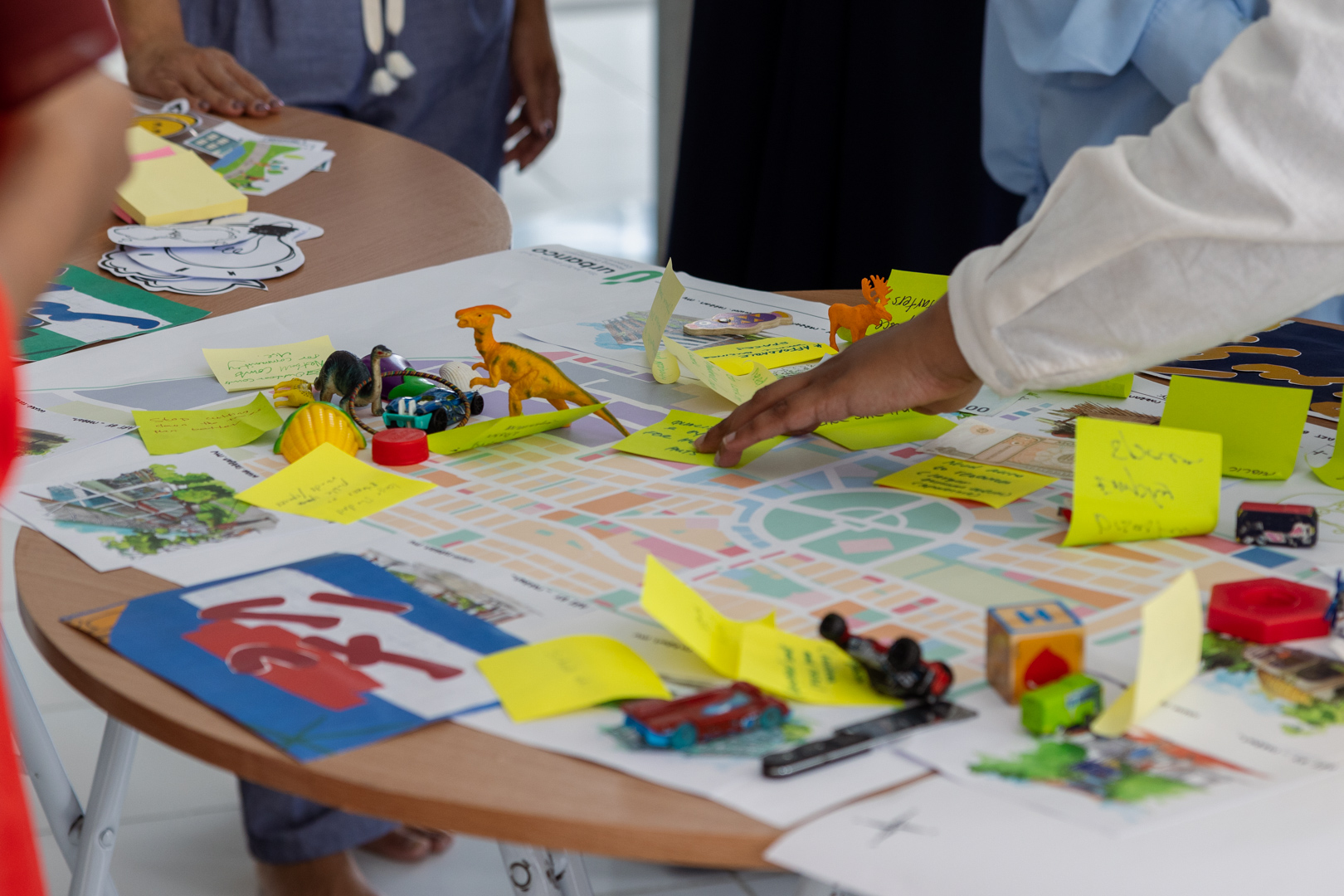
Resident engagement event by UNDP & Urbanco.
We started off with a simple survey – Sitee to City, which in context translates from the Maldivian local script of Dhivehi, to English as “A letter to your city”. In a catchy coincidence, both words are pronounced in the same way. In under two hours, we had over 70 residents coming in and drop their “letters” into envelopes on a board that we set up at the entrance of a mini mall, placed within busy cafés and a courtyard. We later followed up with an online survey where we got over 500 responses with people rating the city, its built and social infrastructure, open spaces, services, provisions and more. The most intriguing element among all, out of many perhaps, was understanding what the residents value most about the city and how they connect with the communities that they share this home with.
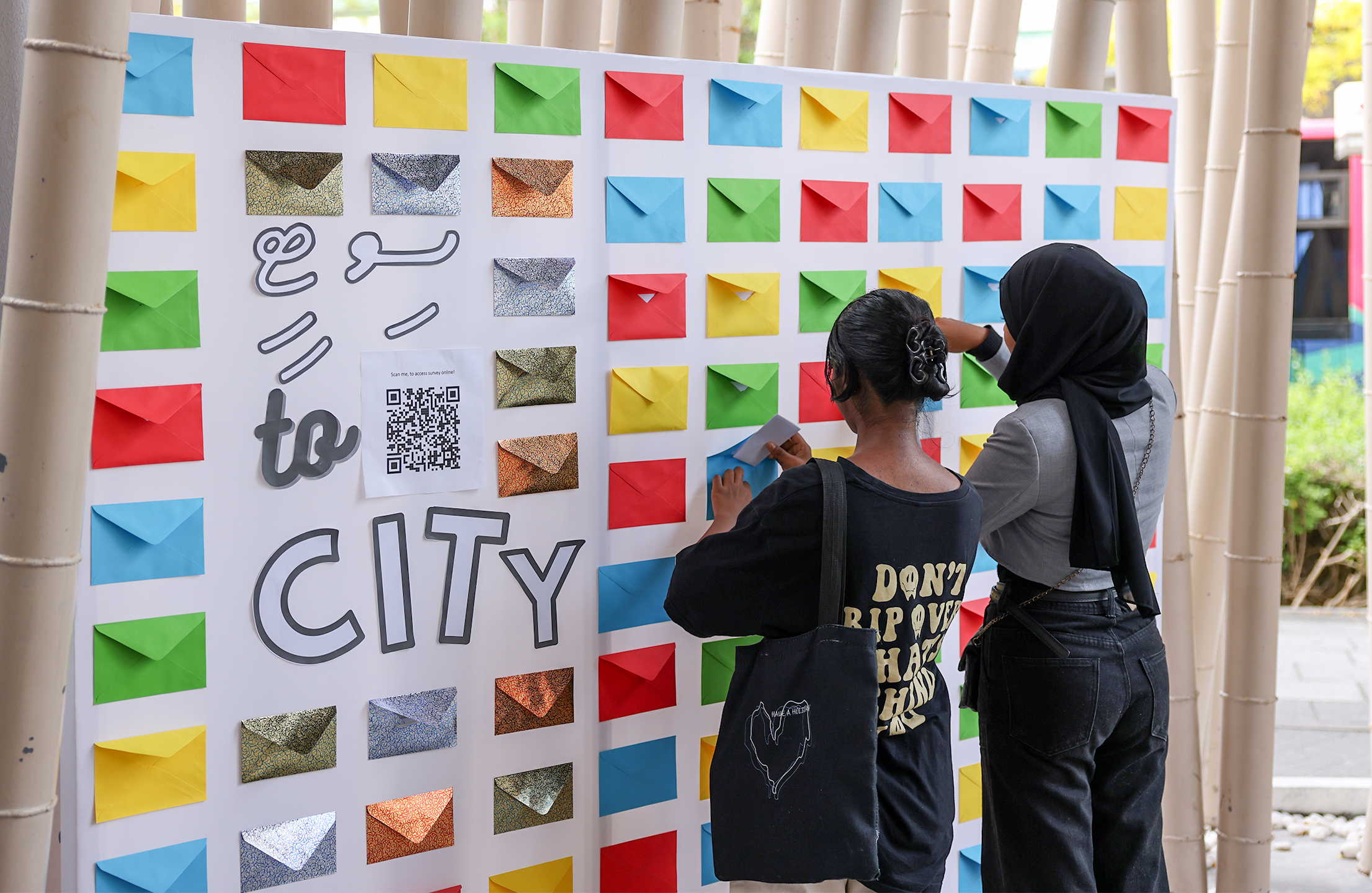
Sitee to City event by UNDP & Urbanco.
How well can you identify with a city that was a shallow lagoon just 26 years ago?
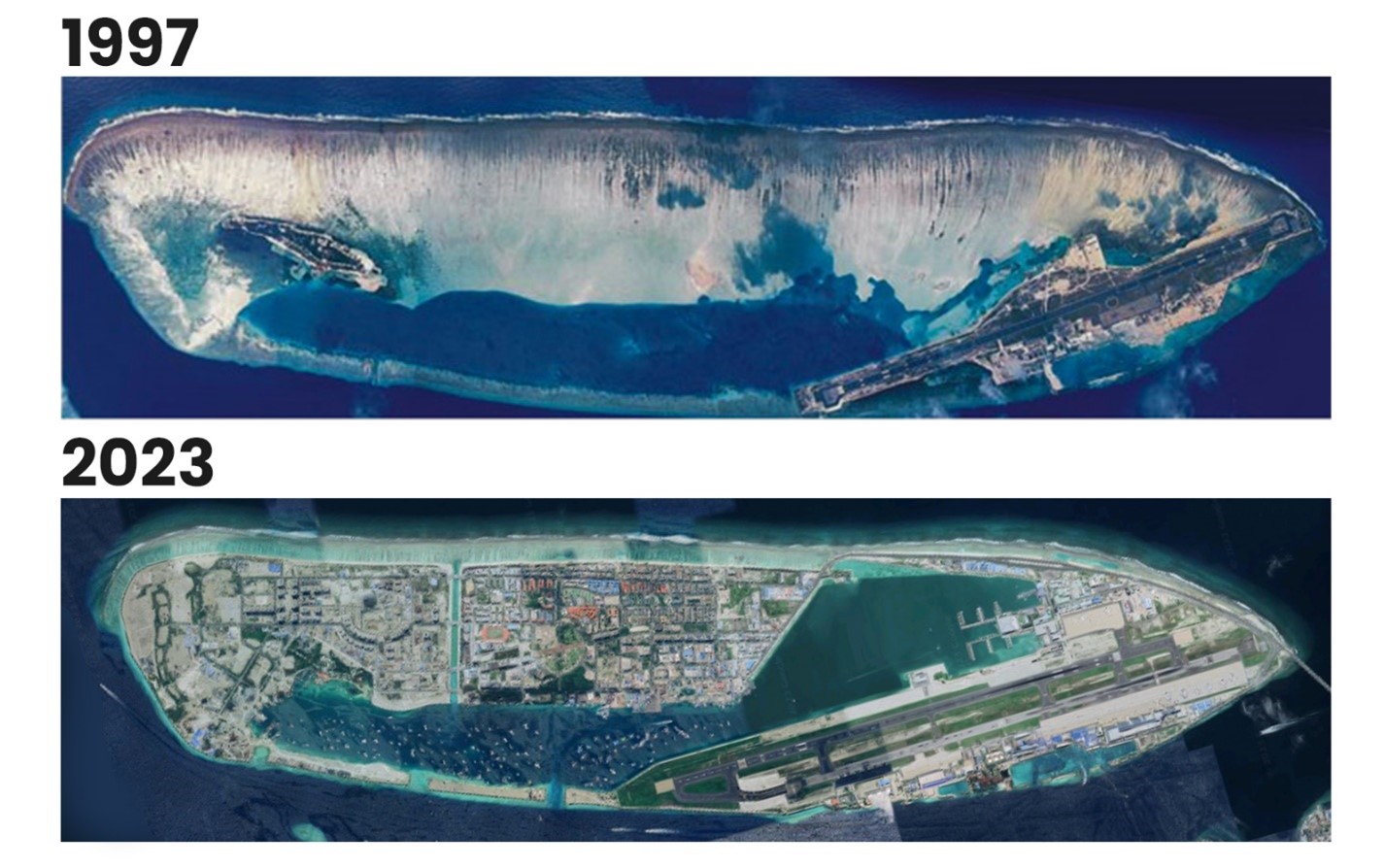
Satellite image of Hulhumalé from 1997 and 2023.
Hulhumalé city was created by land reclamation from a shallow lagoon that strategically lay in between the capital city of Male’ and the main international airport of the Maldives. Considering that Hulhumalé celebrated its first residential settlement in 2004, the city is only 19 years old. While there are a couple families who have been residing in the city since then, most of the population is young, new and constantly changing with inter-island migratory patterns. Most of the migrants to the city are from the outer islands, who were relocated in the rescue efforts from the 2004 Indian ocean tsunami, or those who had recently secured government housing, and those seeking a better life with a higher provision of education, healthcare and job opportunities that are limited in small island communities.
We tried asking ourselves the question “Does Hulhumalé feel like home?” and the answers revolved around the lack of belonging, lack of cultural connection – all indicating that the city is outgrowing the rate of the social connections that people are making in their neighbourhoods.
“The islands are our culture. You just don’t see it in the city.”
The beaches in Hulhumalé are artificial, and like a well-designed coastal town it has modern cafés and boutique beachfront hotels lined up near the shore. Hulhumalé has wider roads, strategically planted trees, residential and commercial areas, neighbourhood parks and playgrounds. So, what’s working and what’s not?
A culture of co-creation and participatory planning may very well be the answer and that is one of Urbanco’s commitments in their city planning strategy. In our conversations with Urbanco’s urban planners, we learnt that one of the ways that they measure a job well done is by observing how people interact with a new development.

A residential neighbourhood in Hulhumalé.
“If people are able to use it, accept it and make themselves comfortable in a new space as if it has always been there, you know that it's done right.” - Urbanco

Painting community park.
A Culture of Firsts
From living less than 2 meters above the mean sea level to moving to residential towers that are 25-storeys high, most experiences in Hulhumalé marks a first for many Maldivians. From travelling on a public bus to the introduction of a cashless, smart society with online services, smart parking – there is a lot to commend, improve and adapt to.
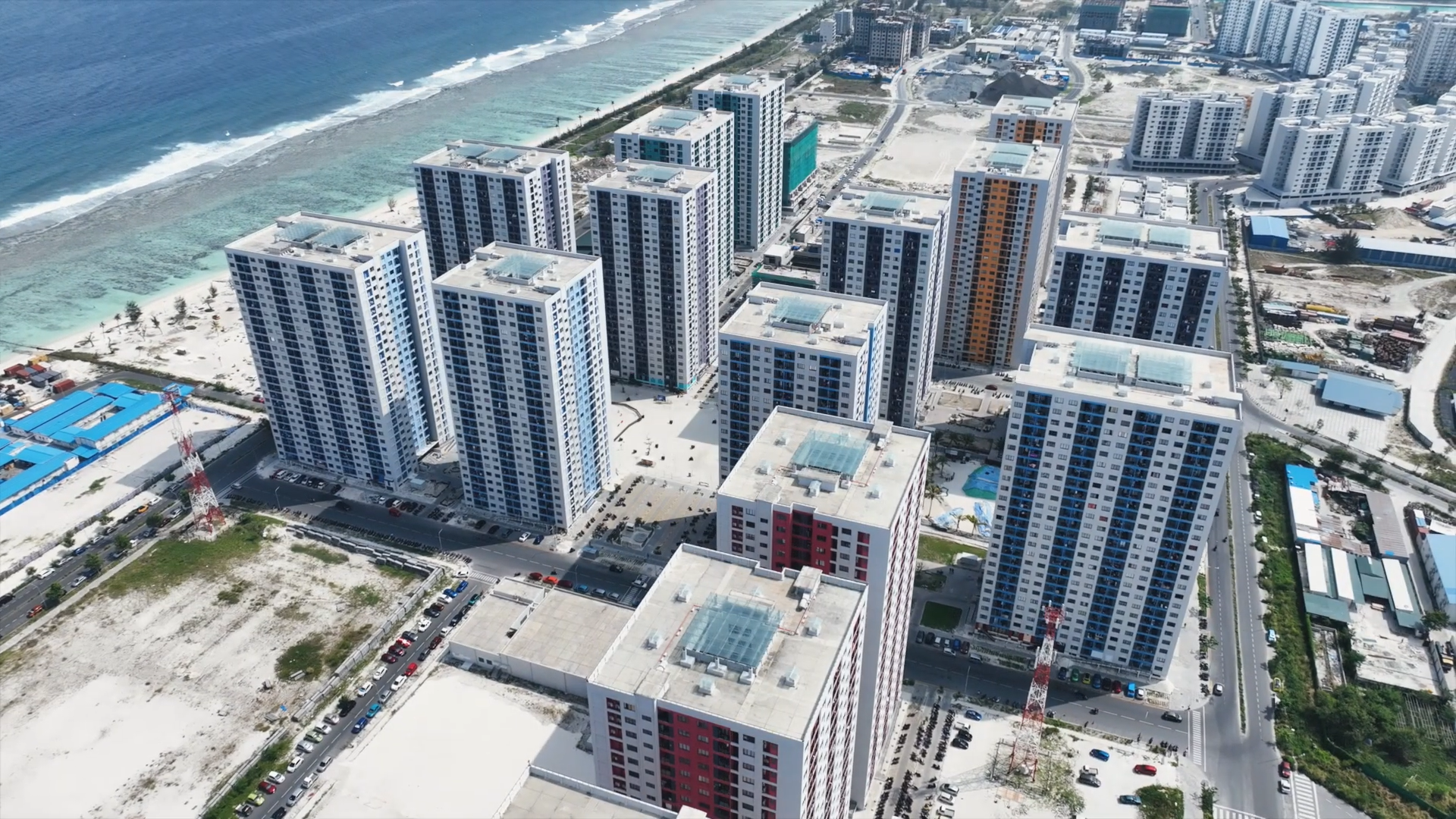
Building complexes in Hulhumalé.
As a young city, everyone here is getting used to the fast-moving, changing environment and some communities are finding it harder than others. For People with Disabilities, accessibility within the city is limited. Roads, pedestrian streetlights, and accessibility to buildings remain challenging. Disability friendly parks, playgrounds and beaches are few to none.
“I hope to bring to the attention of people with disabilities that there are spaces in the city where we can enjoy ourselves too. There are new ramps, beaches, and parks – I hope that more children and people facing the same mobility challenges as myself can see more of us visiting these places and they are encouraged to join too. I hope that the city developer sees that we need more inclusive infrastructure.” – Group dialogue participant.
As the community members spoke, it became evident that Hulhumalé indeed has a culture. It was a culture that was shared by the people themselves while adapting to their new homes in the city. This shared culture was built on learning, getting out of their comfort zones, helping, and supporting each other. It was a culture of advocating for better and just opportunities, inclusive communities and safer environments that can help the residents thrive.
While city developers focused on getting the infrastructure and homes ready for the growing population, forming social connections were left to the people. We found out from members of the community who formed informal community groups within residential towers, some creating their own emergency evacuation drills, designating residential leaders, building a culture of circular economy of thrifting, gifting, and sharing everything from furniture to clothes, baby bassinets and trolleys to kitchenware.
Are We Home Yet?
In residential zones of the city, you can see women setting up their own little food stalls selling pastries and baked goods. In between the residential buildings, you will see pocket-sized urban gardens being tended by people growing their own supply of edibles and flowering plants. You can see young girls and boys learning new sports at the many sports courts and centers. Families come together for community events, painting the concrete parks, walkways, benches, and walls with murals, filling up the city with life, in paint and colour. People are rediscovering their hobbies in the city context – the best spots to go fishing, skating, or sitting down for an outdoor game of chess. The coffee shops buzz with coffee aficionados of all ages. Sunrise and sunsets welcome joggers on their laps on the tree-flanked lanes around the city, and the elderly enjoy peaceful respites on the beaches, as their grandchildren play on the sand... People here are creating their own culture, and the city does not have one identity just like how no two islands can be the same.
“It is a home to people from all over the Maldives and beyond, and that’s the best part about the city. That, and because of the cats that live here too.” – From Sitee to City.
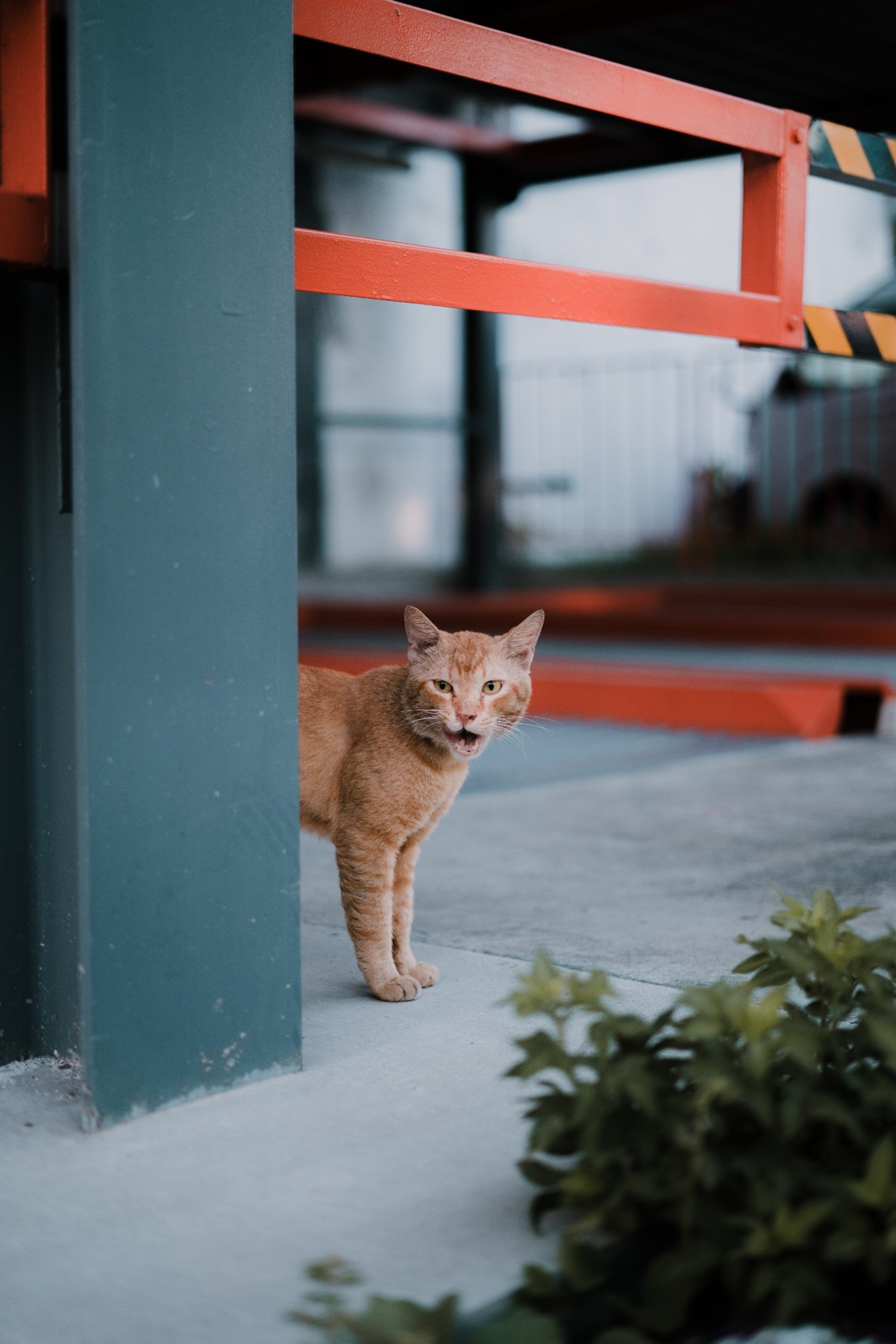
City cats of Hulhumalé.
*** Watch this space as the Lab works on making the Livability Index dashboard live to the public and test collective intelligence methods with communities for participatory planning in Hulhumalé.
[1] World Bank (2023) Urban Development. Available at: https://www.worldbank.org/en/topic/urbandevelopment/overview#:~:text=Globally%2C%20over%2050%25%20of%20the,housing%20their%20expanding%20populations%20need. Accessed: June 2023
[2] Maldives Bureau of Statistics (2023) Census 2022 Results. Available at: https://census.gov.mv/2022/wp-content/uploads/2023/07/P2.pdf. Accessed: June 2023
[3] Maldives Bureau of Statistics (2023) Census 2022 Results. Available at: https://census.gov.mv/2022/wp-content/uploads/2023/07/P2.pdf. Accessed: June 2023
[4] Urbanco (2023) About Hulhumale. Available at: https://www.urbanco.mv/hulhumale/. Accessed: June 2023

 Locations
Locations